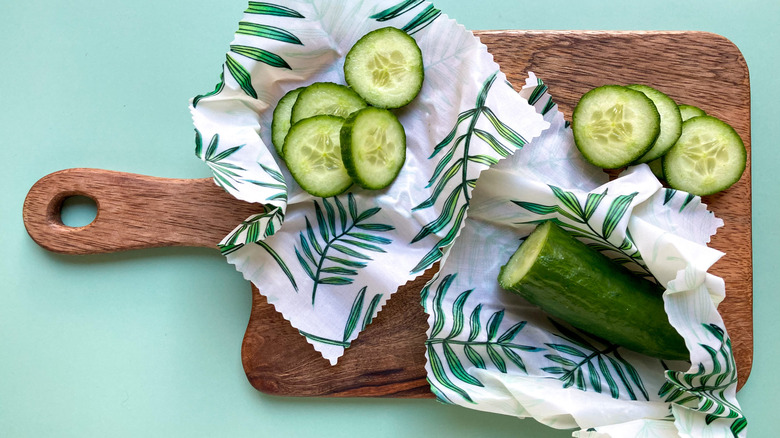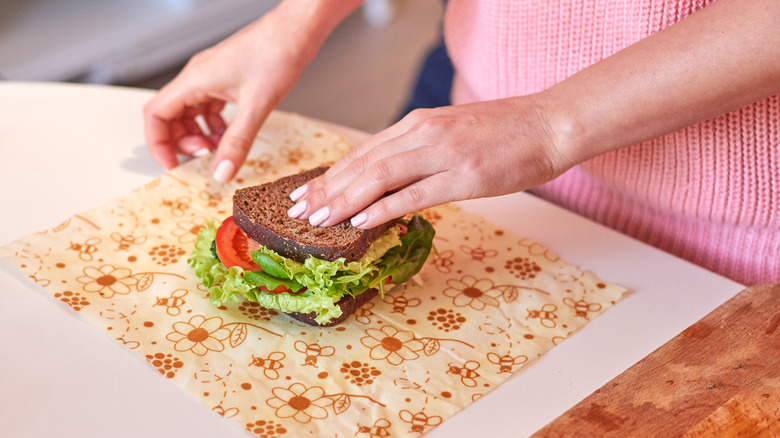Read This Before Using Beeswax Wrap
Swapping your old Tupperware, clingfilm wraps and Ziploc bags for a beeswax wrap has many indisputable benefits. A beeswax wrap is typically made with a cloth of organic cotton which is coated with beeswax (a natural wax that comes from bees), plant-based oils like jojoba oil, and tree resin (via Good Housekeeping). Because beeswax wraps are completely natural, they are plastic-free reusable wraps that can be used for just about anything — covering bowls of food, wrapping dry foods like sandwiches, breads, cheese, and storing leftovers. According to Emily Tatum, founder of Ideal Wrap, storing leftover avocado in a beeswax wrap can even keep it fresh and green for four days.
Having said that, there are many disadvantages to using beeswax wraps that you should know about before you decide to start using them. For one, beeswax wraps can be an expensive buy. Even though in the long run, the cost of using a reusable beeswax wrap can turn out to be more bang for your buck than the comparatively cheaper, single-use plastic bags, it's hard to ignore the hefty price tag. If you do decide to buy it anyway, there are many things to keep in mind when using beeswax wraps to store food.
Because beeswax wraps are all-natural, they can get moldy if you aren't careful with them. In a blog post on Ideal Wrap, Tatum explains that when beeswax wraps are new, they have a proper coating of wax on them that helps seal out moisture.
Beeswax wraps can get moldy
As you use them, the wax coating gradually wears off, which allows water and moisture to get through the wrap and come in contact with food — and with dampness and moisture can come mold. This is why it's important to make sure your beeswax wrap is completely dry and free of any food particles before storing it to use again.
Tatum says that beeswax wraps tend to absorb the smell of the food you're storing in them. If you're storing fragrant foods like half onions and peeled garlic cloves, chances are that the beeswax wrap will absorb the smell and transfer it to the next thing you store in it. If you don't want your breads and cheese smelling like onions and garlic, Tatum suggests keeping a separate wrap aside specifically to store only fragrant foods.
It's also best to remember that beeswax wraps can melt. The Kitchn points out that beeswax wraps can become bendy when they come in contact with the warmth from your hands. While this makes it easy to bend it to fit the shape of what you're using it for, it also means that a beeswax wrap won't completely seal around the food or containers and will leave pockets of air.
If you do think that beeswax wraps are worth the investment as long as you put some care into their maintenance, The Spruce Eats offers some suggestions that will help you decide which beeswax wrap to buy.

